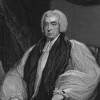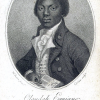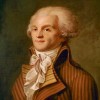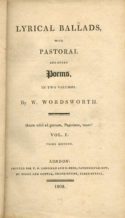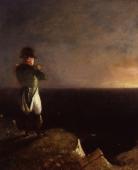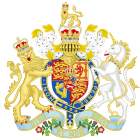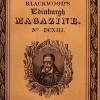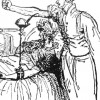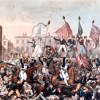EN316: Revolution and Empire: British Literature from 1660-1900
Created by Stacey Kikendall on Sun, 02/07/2021 - 17:58
This timeline presents important dates and events from the Restoration up through the end of the Victorian period, with special reference to authors and their works we read in class.
Timeline
Chronological table
| Date | Event | Created by | Associated Places | |
|---|---|---|---|---|
| 1851 |
Crystal Palace opens ArticlesJules Law, “The Victorian Stereoscope” Related ArticlesAnne Helmreich, "On the Opening of the Crystal Palace at Sydenham, 1854" |
Dave Rettenmaier | ||
| 1660 |
RestorationCharles II restored to English throne |
Stacey Kikendall | ||
| 1673 |
Test ActRequires all officeholders to swear allegiance to Anglicanism |
Stacey Kikendall | ||
| 1681 |
Dissolution of ParliamentCharles II dissolves Parliament |
Stacey Kikendall | ||
| 1685 |
Death of Charles II, James II becomes KingJames II was Charles II's Catholic brother |
Stacey Kikendall | ||
| 1688 to 1689 |
The Glorious RevolutionJames II exiled and succeeded by his Protestant daughter, Mary, and her husband William of Orange |
Stacey Kikendall | ||
| 1690 |
Two Treatises on GovernmentWritten by John Locke |
Stacey Kikendall | ||
| 1690 |
An Essay Concerning Human UnderstandingWritten by John Locke |
Stacey Kikendall | ||
| 1700 |
Some Reflections upon MarriageWritten by Mary Astell |
Stacey Kikendall | ||
| 1702 |
Death of William III, Anne becomes QueenAnne was the other Protestant daughter of James II |
Stacey Kikendall | ||
| 1706 |
A Preface, in Answer to Some Objections to Reflections upon MarriageWritten by Mary Astell |
Stacey Kikendall | ||
| 1707 |
Act of Union with ScotlandScotland becomes part of Great Britain |
Stacey Kikendall | ||
| 1714 |
Death of Anne, George I becomes KingGeorge I was the great-grandson of James I. He is the first Hanoverian king. Tory government replaced by Whigs. |
Stacey Kikendall | ||
| 1716 to 1718 |
Turkish Embassy LettersLady Mary Wortley Montagu writes her letters from Turkey |
Stacey Kikendall | ||
| 1717 |
The Rape of the LockWritten by Alexander Pope - final version |
Stacey Kikendall | ||
| 1727 |
George I dies, George II becomes kingGeorge II was George I's son. |
Stacey Kikendall | ||
| 1729 |
A Modest ProposalWritten by Jonathan Swift |
Stacey Kikendall | ||
| 1743 to 1745 |
Marriage A-la-ModePained by William Hogarth |
Stacey Kikendall | ||
| 1746 |
Jacobite Rebellion endsCharles Edward Stuart ("Bonnie Prince Charlie)'s defeat at Culloden ends the last Jacobite rebellion |
Stacey Kikendall | ||
| 1755 |
Dictionary of the English LanguageWritten by Samuel Johnson |
Stacey Kikendall | ||
| 1760 |
George III becomes kingGeorge II dies, his son take the throne |
Stacey Kikendall | ||
| 1773 |
A Mouse's PetitionWritten by Anna Letitia Barbauld around 1771, published in 1773 |
Stacey Kikendall | ||
| 1775 to 1783 |
American RevolutionAmerican colonies rebel against British rule |
Stacey Kikendall | ||
| May 1781 |
Sunday Observance Act
Passage of this Act, formally titled “Act for Preventing Certain Abuses and Profanations on the Lord’s Day, Called Sunday,” had a powerful, repressive effect on British society and culture for more than a century-and-a-half, as noted by both its proponent (Bishop Beilby Porteus) and its many Victorian critics, among them John Stuart Mill in On Liberty. ArticlesChristopher Lane, "On the Victorian Afterlife of the 1781 Sunday Observance Act" |
Dave Rettenmaier | ||
| 9 Apr 1787 |
First settlers depart for Sierra Leone
Articles |
Dave Rettenmaier | ||
| Jan 1789 |
Interesting Narrative of the Life of Olaudah Equiano
Articles |
Dave Rettenmaier | ||
| 1789 |
Written in the Church-Yard at Middleton in SussexWritten by Charlotte Smith, included in her collection Elegiac Sonnets |
Stacey Kikendall | ||
| 5 May 1789 to 10 Nov 1799 |
French Revolution
On 5 May 1789, the Estates-General, representing the nobility, the clergy, and the common people, held a meeting at the request of the King to address France’s financial difficulties. At this meeting, the Third Estate (the commoners) protested the merely symbolic double representation that they had been granted by the King. This protest resulted in a fracture among the three estates and precipitated the French Revolution. On 17 June, members of the Third Estate designated themselves the National Assembly and claimed to represent the people of the nation, thus preparing the way for the foundation of the republic. Several pivotal events followed in quick succession: the storming of the Bastille (14 July), the approval of the Declaration of the Rights of Man and of the Citizen (26 August), and the march on Versailles that led to the enforced relocation of the royal family to Paris (5-6 October). These revolutionary acts fired the imagination of many regarding the political future of France, and, indeed, all of Europe. The republican period of the revolution continued in various phases until 9-10 November 1799 when Napoleon Bonaparte supplanted the government. ArticlesDiane Piccitto, "On 1793 and the Aftermath of the French Revolution" |
Dave Rettenmaier | ||
| 1791 |
Epistle to William Wilberforce, Esq. on the Rejection of the Bill for Abolishing the Slave TradeWritten by Anna Letitia Barbauld |
Stacey Kikendall | ||
| 1 Jan 1792 |
Vindication of the Rights of Woman
ArticlesAnne K. Mellor, "On the Publication of A Vindication of the Rights of Woman" Related Articles |
Dave Rettenmaier | ||
| 5 Sep 1793 to 27 Jul 1794 |
Reign of Terror
On 5 September 1793, the National Convention, France’s ruling body from 1793 to 1795, officially put into effect terror measures in order to subdue opposition to and punish insufficient support for the revolution and the new regime. From the autumn of 1793 until the summer of 1794, thousands of people across the country were imprisoned and executed (including the Queen) under the ruthless leadership of Maximilien Robespierre. The guillotine, particularly the one in Paris’s Place de la Révolution, served as the bloody emblem of the fear tactics that began to manifest themselves first in the formation of the Committee of Public Safety (6 April 1793) and subsequently in the implementation of the Law of Suspects (17 September 1793). The Terror ended on 27 July 1794 with the overthrow of Robespierre, who was guillotined the next day. ArticlesDiane Piccitto, "On 1793 and the Aftermath of the French Revolution" |
Dave Rettenmaier | ||
| 1794 |
Songs of Innocence and of ExperienceWritten by William Blake The Songs of Innocence was originally etched in 1789, but was combined with additional poems in 1794 as Songs of Innocence and of Experience |
Stacey Kikendall | ||
| 1798 |
Rebellion in IrelandUprising against British rule in Ireland, had help of French but were eventually defeated |
Stacey Kikendall | ||
| 1801 |
1801 Ireland joins Great BritainParliamentary Union of Ireland and Great Britain. Act of Union passed in 1800, took effect in 1801 |
Stacey Kikendall | ||
| Jan 1801 |
Inclosure Act
ArticlesCarolyn Lesjak, "1750 to the Present: Acts of Enclosure and Their Afterlife" (forthcoming) |
Dave Rettenmaier | ||
| 1802 |
William Wordsworth's Lyrical BalladsWilliam Wordsworth's Lyrical Ballads, 3rd edition, containing the expanded and final version of the famous "Preface," one of the founding theoretical statements of the Romantic poetical movement. This image is in the public domain in the United States because its copyright is expired. https://www.abebooks.com/first-edition/Lyrical-Ballads-Pastoral-Poems-Vo... Articles |
Dave Rettenmaier | ||
| 26 May 1805 |
Napoleon made king of Italy
In a flamboyant and highly theatrical gesture, Napoleon Bonaparte signifies his political and military dominance over the Italian peninsula with a ceremony in Milan Cathedral, where he crowned himself King of Italy with the ancient, iconic iron crown of Lombardy. This crowning of Napoleon as King is a result of the French conquest of Italy. His full title was "Emperor of the French and King of Italy." ArticlesAlison Chapman, "On Il Risorgimento" Related Articles |
Dave Rettenmaier | ||
| 1807 |
British slave trade outlawedSlave trade outlawed (but not slavery itself) |
Stacey Kikendall | ||
| 1811 to 1820 |
The RegencyGeorge, Prince of Wales, acts as regent for George III, who has been declared incurably insane |
Stacey Kikendall | ||
| 16 Oct 1811 |
National Society for the Education of Poor Children foundedOn 16 October 1811, the National Society for the Education of Poor Children in the Principles of the Established Church (the Church of England) was founded to establish “National Schools.” According to their founders, poor children were to be taught to avoid vice and behave in an orderly manner within their station. To limit costs, the monitorial system was employed, by which more advanced pupils taught younger ones. Related ArticlesFlorence S. Boos, “The Education Act of 1870: Before and After” |
Dave Rettenmaier | ||
| 1812 to 1815 |
1812 WarWar between Britain and United States |
Stacey Kikendall | ||
| 1813 |
Pride and PrejudiceWritten by Jane Austen |
Stacey Kikendall | ||
| 6 Apr 1814 to 26 Feb 1815 |
Napoleon exiled to ElbaNapoleon was exiled to Elba, an island in the Meditteranean, after he abdicated on 6 April 1814. He spent nine months and 21 days on the island, then attempted to retake his empire, leaving the island on 26 February 1815. Napoleon was definitively defeated at the Battle of Waterloo on 18 June 1815. |
Dino Franco Felluga | ||
| 2 Mar 1815 |
Corn Law Act
The Corn Law Act of 1815 prohibited the importation of grain when the prices in the domestic market were high. The Act was repealed on 25 June 1846. Articles |
Dave Rettenmaier | ||
| Dec 1815 |
Emma
ArticlesAnne Wallace, “On the Deceased Wife’s Sister Controversy, 1835-1907″ |
Dave Rettenmaier | ||
| 1 Apr 1817 |
First number of Blackwood's Edinburgh Magazine
ArticlesMichelle Allen-Emerson, “On Magazine Day” Related Articles |
Dave Rettenmaier | ||
| 26 Sep 1818 |
First medical blood transfusion between humans
ArticlesMatthew Rowlinson, “On the First Medical Blood Transfusion Between Human Subjects, 1818″ |
Dave Rettenmaier | ||
| 12 Jul 1819 |
Britain approves settlement scheme to South AfricaOn 12 July 1819, the British government approved £50,000 for a settlement scheme to South Africa's eastern Cape. Articles |
Dave Rettenmaier | ||
| 16 Aug 1819 |
Peterloo massacre
Related ArticlesJames Chandler, “On Peterloo, 16 August 1819″ Sean Grass, “On the Death of the Duke of Wellington, 14 September 1852″ |
Dave Rettenmaier | ||
| 1 Nov 1819 |
Simultaneous radical meetingsOn 1 November 1819, simultaneous meetings were held, by prior agreement, at Newcastle, Carlisle, Leeds Halifax, Manchester, Bolton, Nottingham, Leicester, Coventry, and elsewhere in England and Scotland. Articles |
Dave Rettenmaier |


